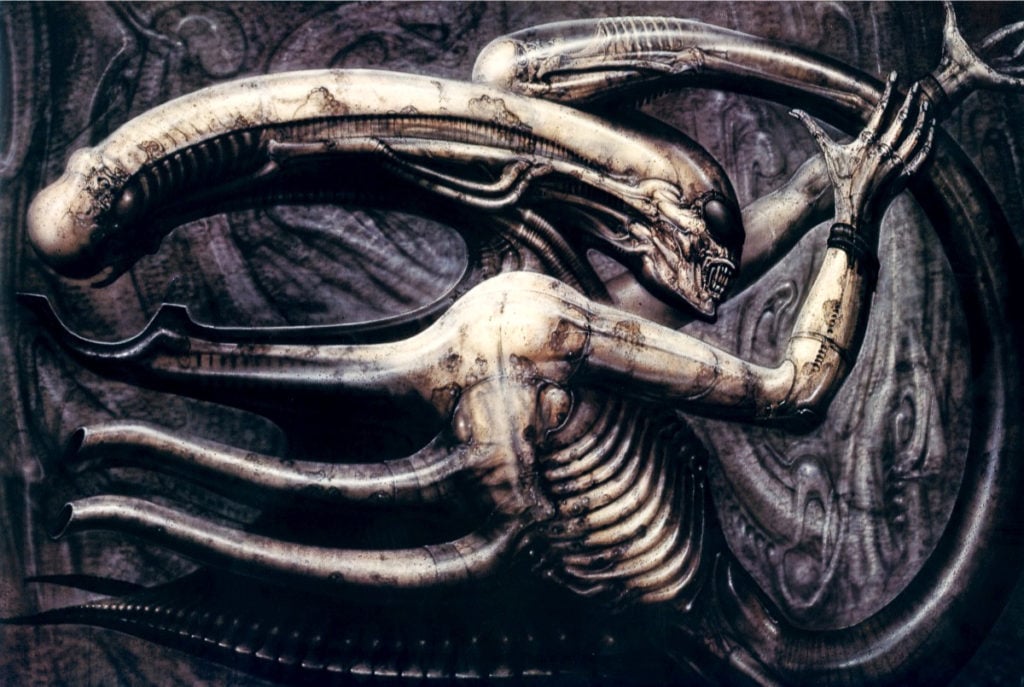Art World
H.R. Giger, Surrealist Artist Who Spawned ‘Alien’, Has Died
The artist's sci-fi cyborgs are the stuff of nightmares.

The artist's sci-fi cyborgs are the stuff of nightmares.

Sarah Cascone

H.R. Giger, the Swiss Surrealist who was responsible for the otherworldly visuals of Ridley Scott’s science-fiction classic Alien, died May 12 from injuries suffered from falling down the stairs of his Zurich home, reports Reuters. He was 74 years old.
A student of architecture and industrial design, Giger began creating ink drawings and polyester works before developing his signature airbrushed works. Painted freehand, his haunting, ghastly landscapes seem like something out of your worst nightmares, featuring strange and frightening cyborgs and other macabre “biomechanical” elements, to use Giger’s preferred terminology.
The artist is best known for his work on the set of the 1979 horror film, for which Giger received the Academy Award for Best Achievement in Visual Effects. His 1976 lithograph Necronom IV served as Scott’s inspiration for the the movie franchise’s titular Xenomorph monster, but he almost missed out on his chance at the film, as distributor 20th Century Fox initially thought Giger’s work was too grotesque. Ultimately, Giger was responsible for designing all the alien elements of the film, including all four of the creature’s different forms. He also worked on 1992’s Alien 3.
In addition to his work in film, Giger found considerable success designing album covers, although the dark, disturbing nature of his work sometimes led to controversy. For the English rock group Emerson, Lake and Palmer’s 1973 record Brain Salad Surgery, the artist created an image of a machine fused with a human skull.
Giger’s design for Debbie Harry’s 1981 solo album, Koo Koo—in which the singer’s face and neck are being pierced with metal rods—was deemed so subversive that the singer’s label cancelled a planned poster campaign on the London Underground. The Dead Kennedys actually were brought to trial on charges of distributing harmful material to minors thanks to a poster insert Giger created for their album Frankenchrist (1985) featuring rows of genitalia. The case was dismissed.
In his later years, Giger began working on the H.R. Giger Museum in Gruyères, Switzerland, which opened in 1998. It displays his paintings and sculptures, as well as his private art collection, which includes works by artists such as Salvador Dalí.
Giger’s work has been exhibited internationally, and has recently been the subject of retrospectives in Hamburg, Moscow, and Istanbul. In 2013, he was inducted into Seattle’s Science Fiction Hall of Fame.